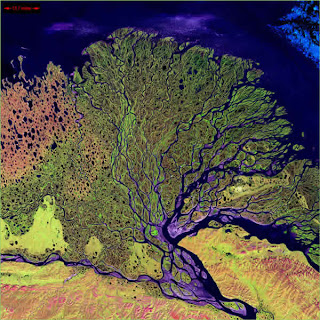
There is an important thing that living organisms need. They all need water. Water travels through the Earth in a cycle. There are eight parts to the cycle. These eight parts are evaporation, transpiration, condensation, precipitation, infiltration, surface runoff, groundwater, and absorption.
Evaporation is the process of water becoming a vapor. Water does this over the oceans the most because that is where there is nothing but water, but evaporation happens in fresh water also.
Transpiration is the passage of water through a plant from the roots through the vascular system to the atmosphere (3). This helps the atmosphere and the water cycle because plants discharge oxygen and that is formed with hydrogen in the air to make,H20, water (4).
Condensation is water vapor becoming a liquid or a solid (2). This happens in a cold atmosphere, usually over mountains, or in clouds.
Precipitation is the process of water, in many different forms, that come from the clouds that have formed in the sky. Water has many forms of precipitation; these many forms are rain, sleet, hail, and snow. Rain is just water as a liquid from the sky. Sleet is freezing rain, or ice droplets. Hail is ice balls with rain. Some of these balls can be the size of a pea to the size of baseballs, even softballs. Snow is a form of water that is frozen into flakes instead of droplets.
Infiltration is the process of water entering Earth's ground through dirt, rocks, and cracks in the surface.
Surface runoff is water that runs along the soil and goes into lakes and rivers (2).
Groundwater is water under the ground that supplies wells and springs (2).
Absorption is happens when the ground, plants, and living organisms use and absorb the water in the water cycle. All living organisms need water to survive and strive.

There are several types of rivers and streams. They are classified by their size and what type of water flows throught the river or stream. All rivers and streams have common features such as starting at a high point and flowing towards the low point. Another common feature is each river or steam has a source such as precipation that formed into ice or just rain. Usually, as the stream is flowing downstream, it is connected to other streams or rivers, which make the river or stream larger (6).

SOURCES
(1) http://www.nhn.ou.edu/~jeffery/course/c_energy/energyl/lec004/water_cycle_001.png
(2) http://www.tawwa.org/story_of_water/html/hydrocycle.htm
(3) http://dictionary.reference.com/browse/Transpiration
(4) http://www.answers.com/water
(5) http://ga.water.usgs.gov/edu/watercycleinfiltration.html
(6) http://www.nhptv.org/NatureWorks/nwep7j.htm
No comments:
Post a Comment